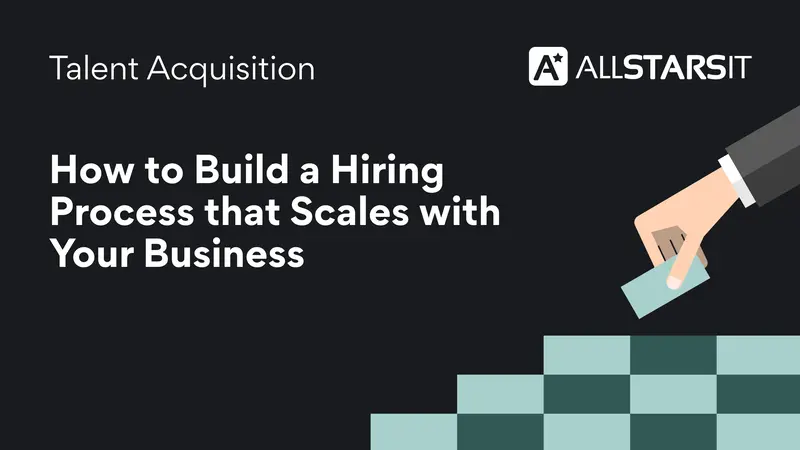As organizations expand, a robust and efficient hiring infrastructure is critical to sustaining growth and maintaining talent standards. A well-structured hiring process provides reliability, fairness, and efficiency in selecting candidates. A crucial early step in achieving this level of scalability involves leveraging dedicated job tracking platforms, which help recruiters manage talent and keep processes consistent. Hiring platforms offer immense benefits for businesses keen to mature their hiring with reliable and scalable systems by integrating every stage of their recruitment funnel.
Key Takeaways:
- Define clear hiring goals and KPIs to drive recruitment success.
- Centralized recruitment systems for consistency and efficiency.
- Leverage technology—such as ATS, AI screening, and video interviews—to streamline the hiring lifecycle.
- Collect and act on feedback for continual process improvement.
Define Clear Hiring Goals and Key Performance Indicators (KPIs)
A scalable hiring process starts with clarity. Define the number of roles you need, the skills required for each position, and an ideal time-to-hire. Establishing metrics such as time-to-fill, cost-per-hire, and candidate quality ensures you’re recruiting in line with business objectives. For example, streamlining steps to reduce time-to-hire by 20% doesn’t just fill open roles faster—it helps decrease operational disruptions caused by vacancies, driving overall productivity. Track these KPIs consistently to monitor trends and identify bottlenecks early.
Develop a Centralized Recruitment Framework
Centralizing your recruitment process guarantees candidate evaluation consistency and compliance with company standards. Consolidated HR teams or talent acquisition specialists should oversee processes from job posting to onboarding. A centralized approach ensures uniform communication, easier data collection, and more strategic resource allocation. This setup also helps deploy standardized tools and policies, which reduces discrepancies and operational risk, especially in multi-department or multi-location organizations.
Implement Applicant Tracking Systems (ATS)
When applications surge, manual tracking is unsustainable. An ATS automates resume screening, manages candidate communications, and tracks applicant progress through every phase. This central repository of candidate data supports efficient collaboration among hiring teams while freeing up recruiters to focus on more strategic tasks. By harnessing the power of automation, you can create a seamless and professional candidate journey from their first application to job offer acceptance.
Incorporate Interview Scheduling Software
Interview coordination may seem simple, but it becomes complex at scale. Interview scheduling software allows candidates to book their own interview slots, minimizes back-and-forth emails, and automatically syncs with recruiters’ calendars. Automated reminders help reduce no-show rates and improve the efficiency of the entire interview process. This level of automation saves time and enhances the candidate experience, reflecting your company’s professionalism and attention to detail.
Adopt AI-Powered Screening Tools
AI can speed up early-stage screening and dilute unconscious bias. Data-driven AI solutions scan resumes, conduct automated interviews, and evaluate candidates’ responses against defined criteria. Advanced screening technology quickly shortlists top profiles, allowing human recruiters to focus on more nuanced aspects of assessment. This increases speed, accuracy, and diversity in your candidate pool, making your hiring process both fairer and more efficient.
Utilize Video Interviewing for Flexibility
Video interviewing breaks down geographical barriers for both candidates and hiring managers. Modern platforms allow for live video sessions, recorded interviews, and even skills assessments through virtual whiteboards or coding tests. These tools can also leverage AI analytics to assess nonverbal communication, giving recruiters a comprehensive insight into a candidate’s potential. Flexibility in scheduling and location makes video interviewing essential for global and remote teams.
Leverage Data-Driven Recruitment Techniques
Data analytics transforms recruitment from guesswork into a continuous improvement engine. Track source-of-hire effectiveness, analyze candidate drop-off points, and measure conversion rates throughout the recruitment funnel. These insights help refine your process, optimize candidate experience, and ensure hiring strategies align with broader business goals. Continuous monitoring of recruitment data lets HR leaders adjust tactics promptly and stay competitive in talent acquisition.
Standardize Interview Processes
Interview standardization is key to consistent and unbiased candidate assessment. Establish a clear set of interview questions and scoring rubrics based on job-specific competencies. Train all interviewers to follow this structure, ensuring fair evaluations while minimizing the risk of bias. This approach delivers more reliable hiring outcomes and makes it easier to train new interviewers as your business grows.
Continuously Optimize and Scale with Feedback
After each hiring round, soliciting feedback from candidates and interviewers uncovers pain points and areas for improvement. Use this input to fine-tune your process, addressing gaps before they hinder recruitment efforts. Regular optimization ensures a positive hiring experience and allows you to adapt quickly as your company’s needs or market conditions change. The cycle of feedback and refinement is crucial to sustaining a high-performing, scalable hiring framework.
Implementing these strategies lays the foundation for a well-structured and adaptable hiring process. By leveraging technology, standardizing methods, and committing to continuous improvement, companies can efficiently attract and retain top talent, fueling long-term growth in a competitive marketplace.
